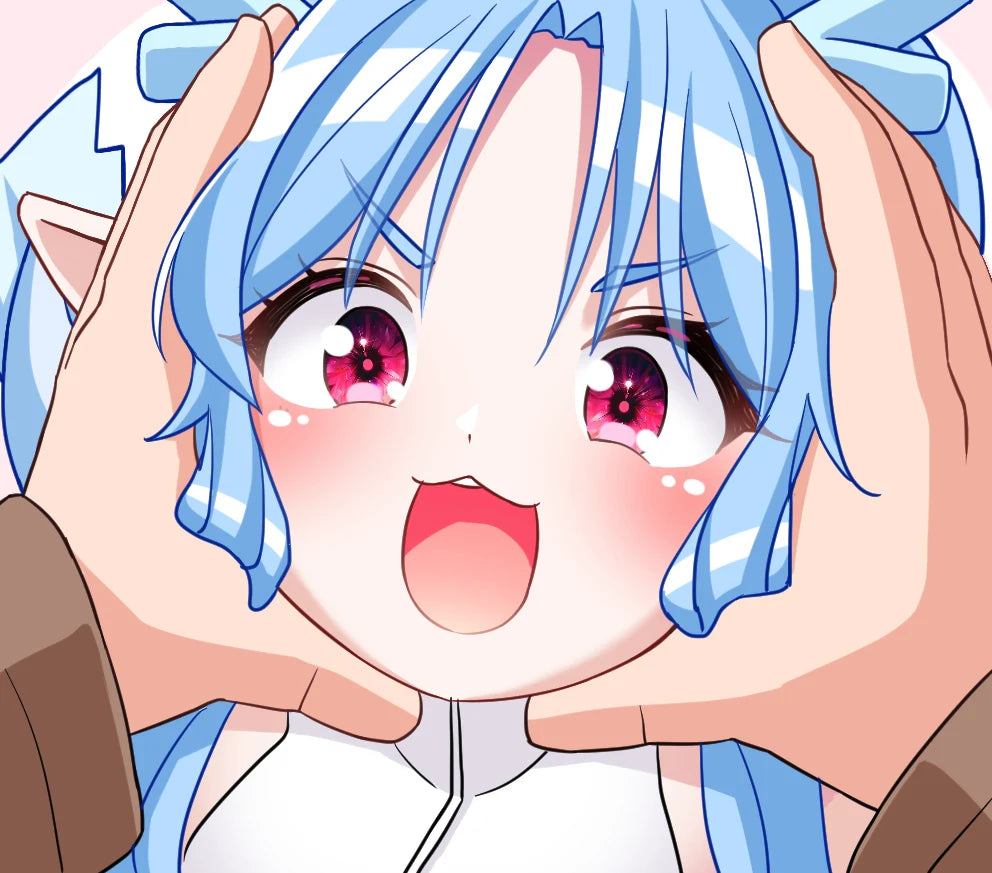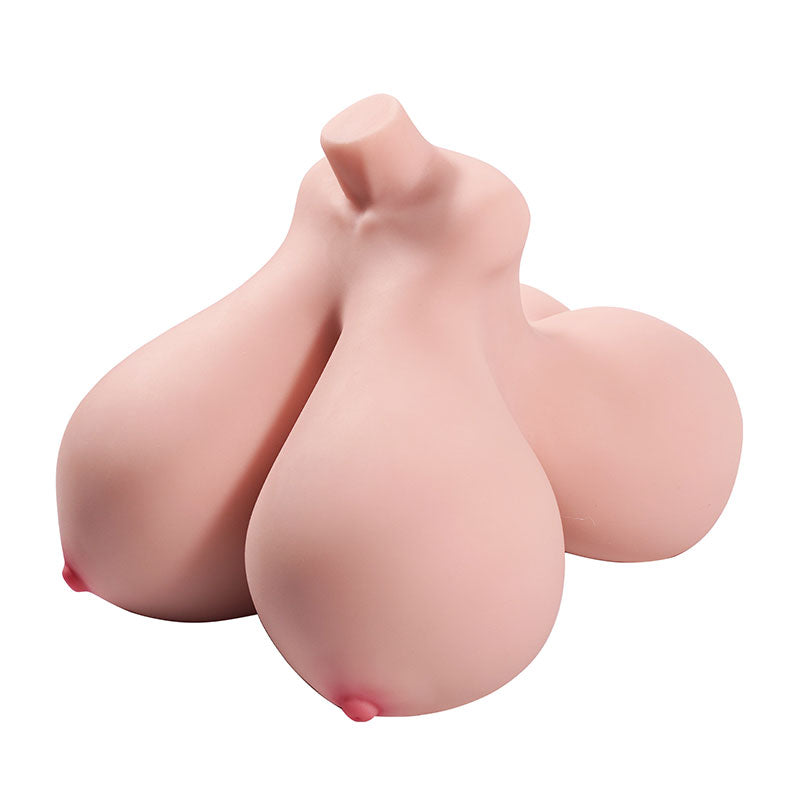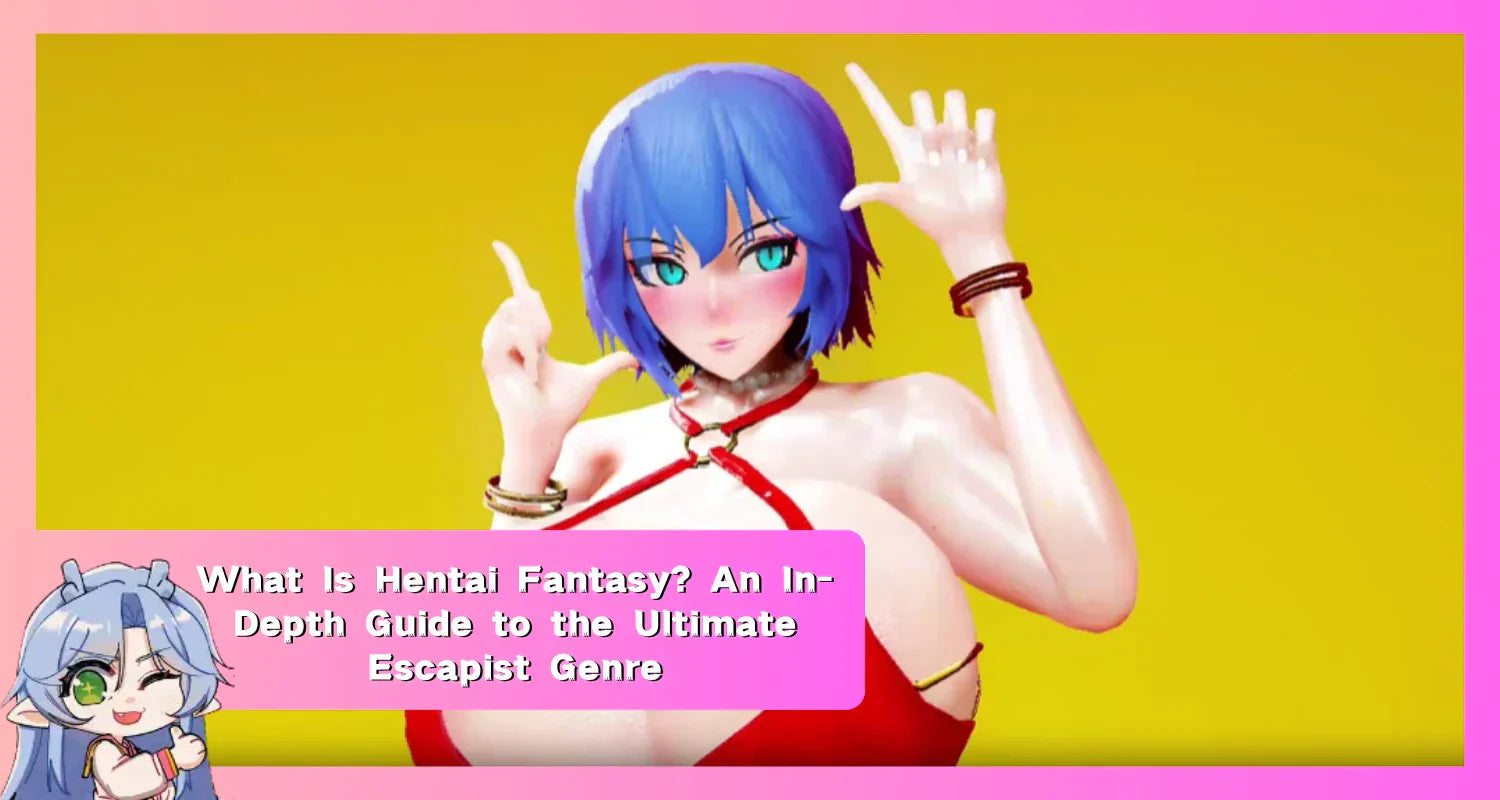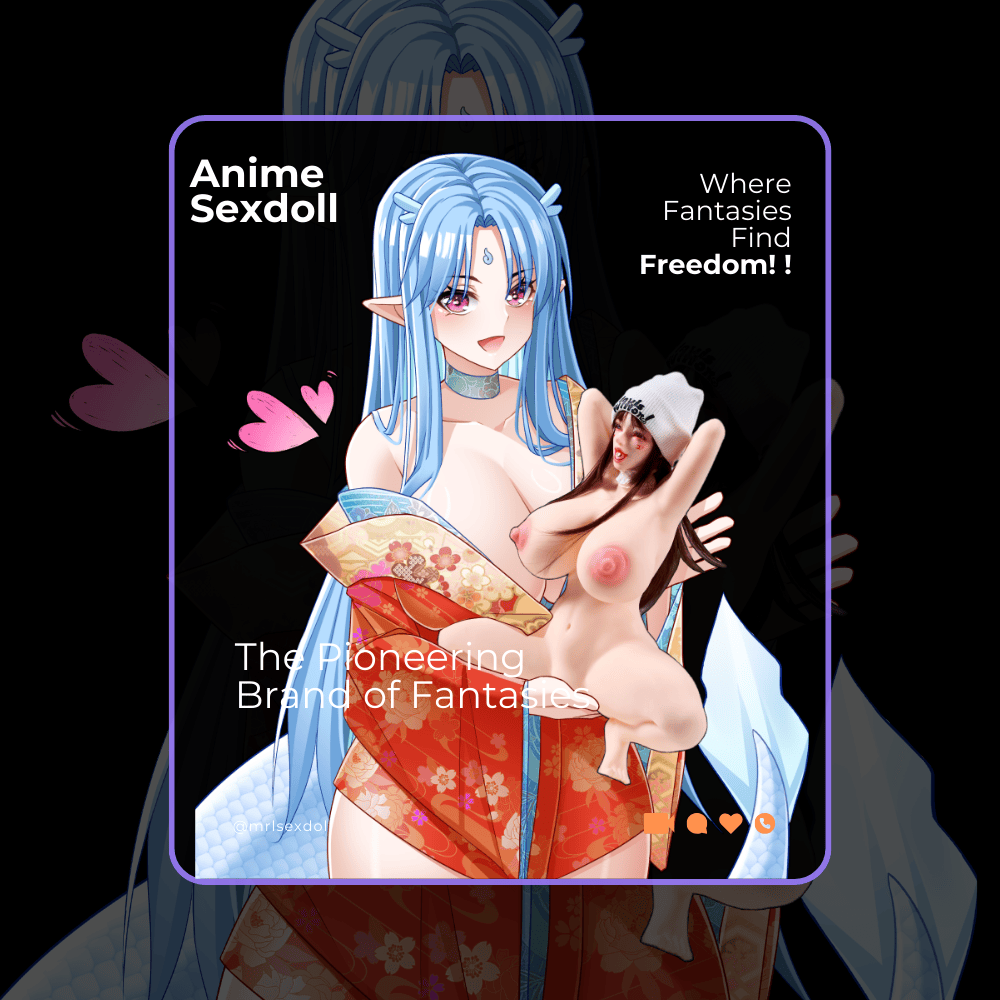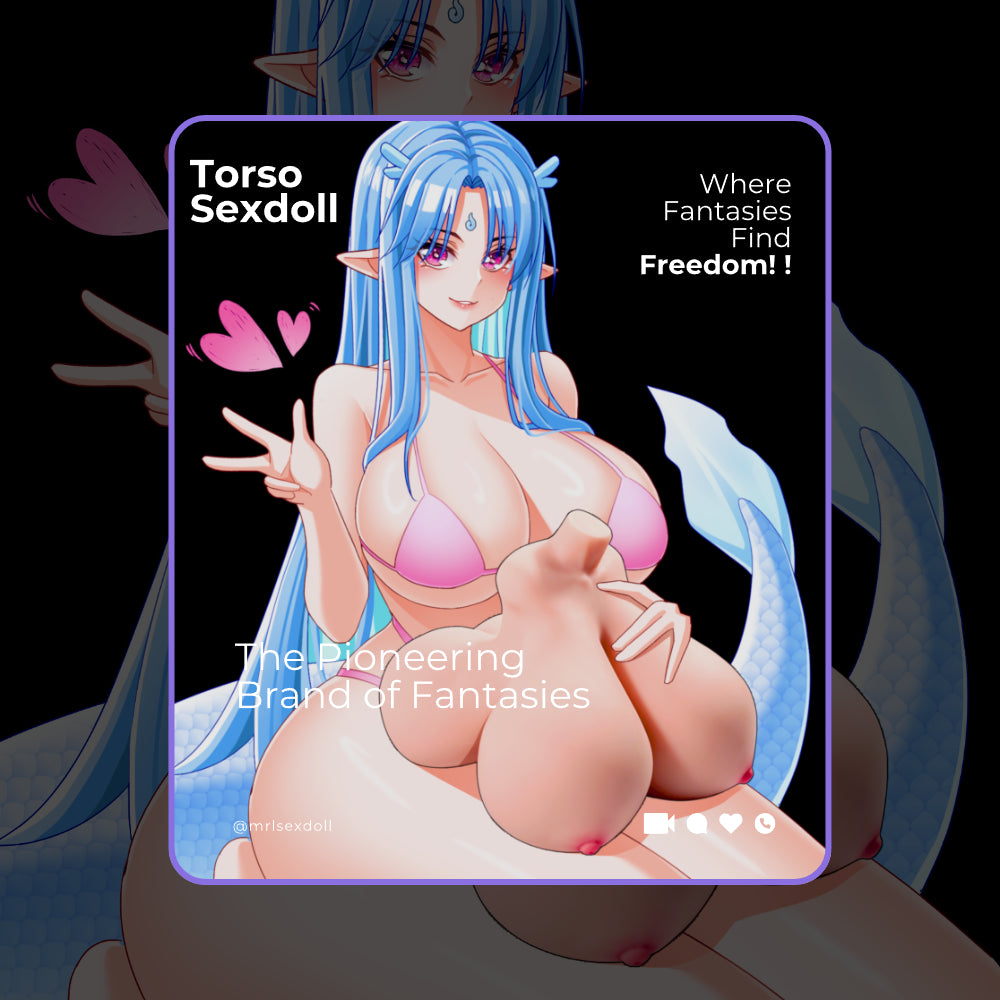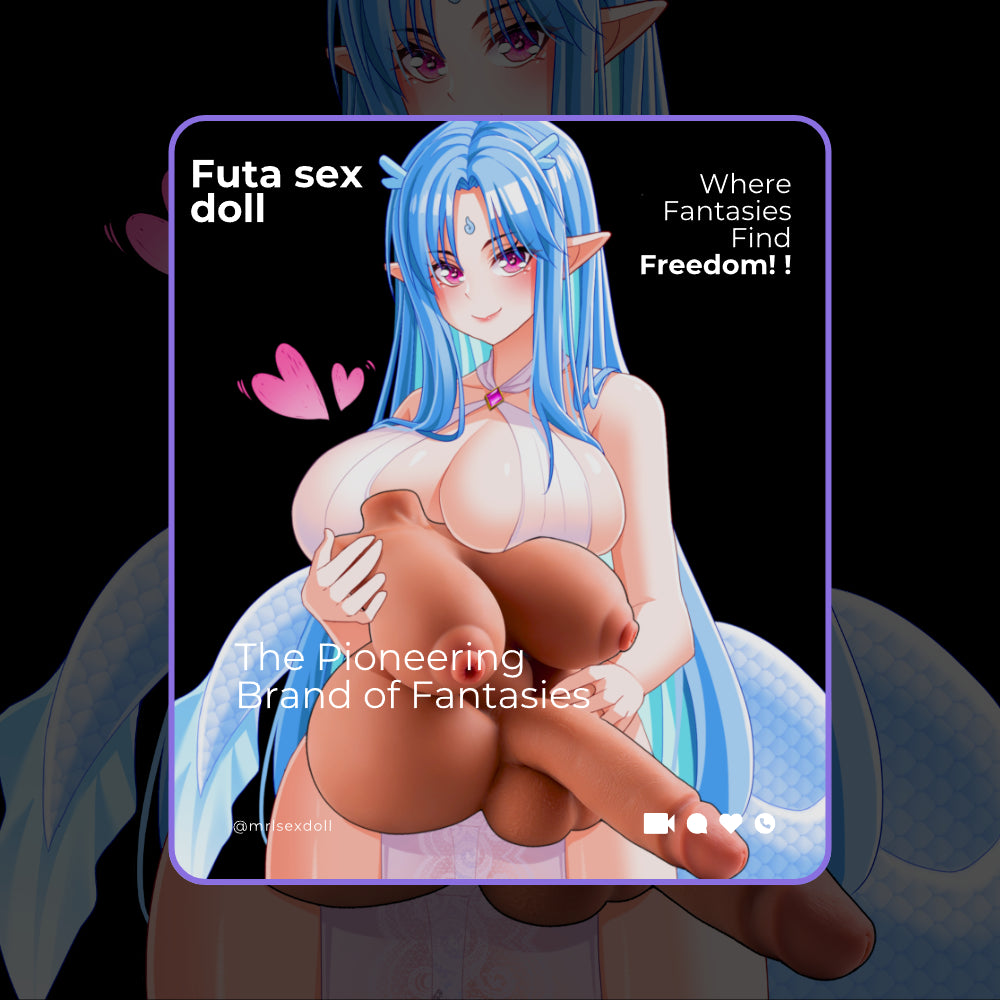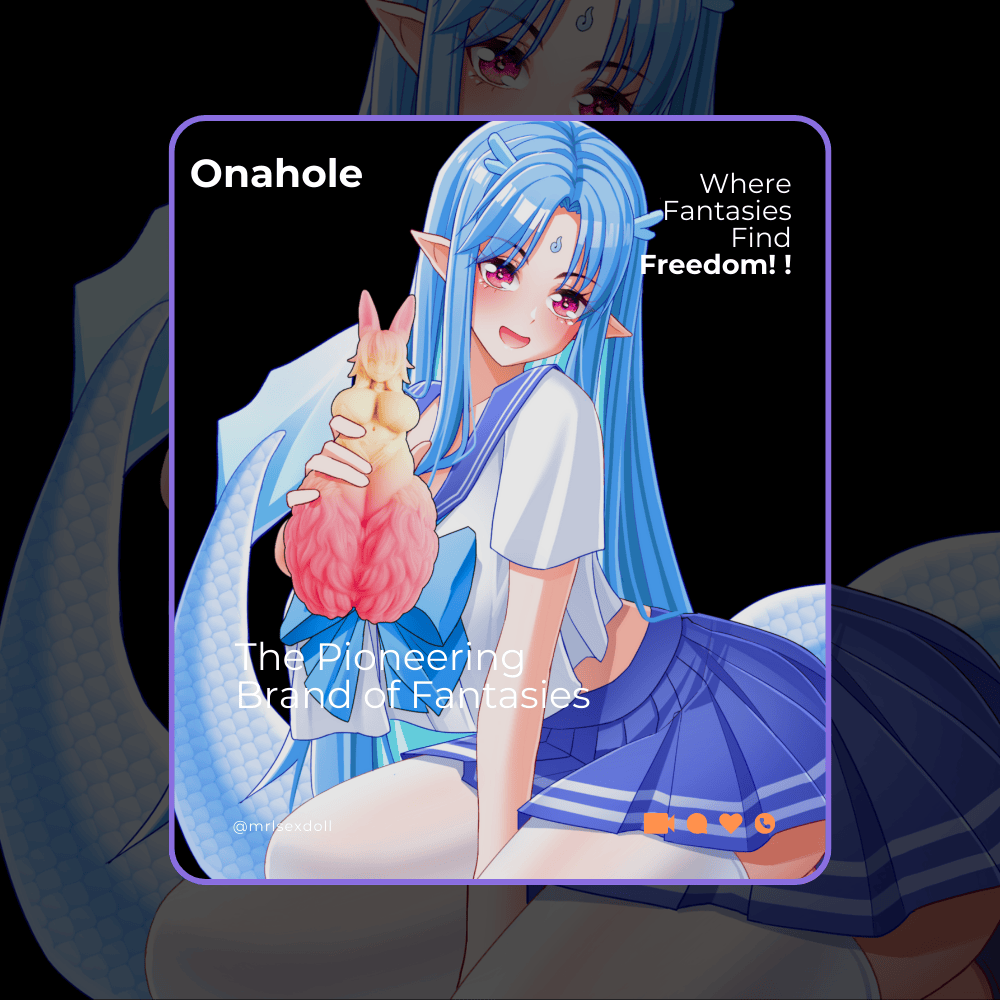What Is Hentai Fantasy? An In-Depth Guide to the Ultimate Escapist Genre
Table of Contents
1.Unpacking the Term: The Cultural Journey of "Hentai"
2.The Core Appeal: Why We Are Drawn to a Fantasy Hentai World
3.Exploring the Realms: Common Themes and Tropes in Hentai Fantasy
4.The Archetypes of Desire: Deconstructing Characters in Hentai Fantasy
5.From 2D Art to 3D Reality: How My Hentai Fantasy Becomes Tangible
6.Frequently Asked Questions (FAQ)
What Is Hentai Fantasy? A Journey Beyond Real-World Boundaries
People have always been fascinated by fantasy. It is a basic human desire to seek out worlds beyond our own, trading the predictable routine of daily life for places full of magic, adventure, and endless possibilities. This need for an escape supports entire industries, from epic novels to blockbuster movies. Within this wide landscape of imagination, however, there is a very specific and powerful subgenre: hentai fantasy. This unique niche combines the limitless creativity of fantasy with an open and explicit exploration of adult themes. It builds worlds that are not only free from the laws of physics but also from the complex social and personal rules that guide human sexuality. This guide will take you on a deep dive into the world of hentai fantasy, looking at its cultural roots, its deep psychological appeal, and its most common story elements to understand what makes it such a powerful and lasting genre.

Unpacking the Term: The Cultural Journey of "Hentai"
To really understand hentai fantasy, you first need to know the word "hentai" itself. The word has a complex history, and its meaning in Japan is very different from how it is used in the West. Understanding how the word's meaning changed is key to appreciating the genre.
The Original Meaning vs. Western Interpretation
In Japanese, the word hentai (変態) means "perversion" or "abnormality". If you call someone hentai in Japan, it is an insult, like calling them a "pervert". The word was first used in science and psychology to describe abnormal traits before it became part of everyday language. Because of this, the term in Japan is not a neutral label for a genre. Instead, it carries a strong negative meaning and often refers to sexual behavior that is seen as extreme or deviant.
However, when Japanese animation and manga started spreading around the world through the early internet, the word's meaning began to change. Western fans, who did not know the deep cultural and linguistic background of the term, started using it for a different purpose. They needed a simple name for the explicit, pornographic anime and manga they were finding. "Hentai" was chosen for this, losing its negative meaning and becoming a neutral, descriptive tag for a specific type of adult entertainment. This change is a great example of how a subculture creates its own language, with a word from another culture becoming the standard term for millions of fans worldwide.
Hentai vs. Ecchi: Drawing the Line
To get an even clearer picture of adult-oriented fantasy anime, we need to understand the difference between hentai and a related term: ecchi. Both deal with sexual themes, but they are very different in how explicit they are. The word "ecchi" comes from the Japanese way of saying the letter 'H', which is the first letter in hentai, but its meaning is much milder. Ecchi content is suggestive and playful. It focuses on "fan service," like partial nudity, revealing clothes, sexual jokes, and funny, awkward situations. It teases the audience but does not show explicit sexual acts. You can think of it as the anime version of softcore content.

Hentai, on the other hand, is all about showing sexual activity in a graphic and explicit way. The story, the characters, and the world are all created to lead up to and feature pornographic scenes. If ecchi is about suggesting, hentai is about showing. This difference is very important. A fantasy anime might have some ecchi moments to make the story more exciting, but a fantasy hentai makes the explicit scenes its main purpose.
The Core Appeal: Why We Are Drawn to a Fantasy Hentai World
The strong attraction of the fantasy hentai genre comes from a powerful mix of psychological drivers. It is more than just a blend of two popular genres; it is a unique creation that offers a very strong form of mental escape and emotional exploration. To understand this appeal, we need to look at how it cleverly combines different kinds of escapism.
Escapism Squared: A Dual-Layered Retreat from Reality
The main appeal of the genre can be seen as a kind of "double escapism," a retreat from reality that works on two separate but connected levels. The first layer is the classic fantasy escapism. This is the familiar wish to leave the boring and often stressful real world and enter a new world filled with magic, mythical creatures, and big adventures. It is an escape from the laws of physics, social norms, and the routines of everyday life.

The second layer is erotic escapism. This offers a retreat from the physical, social, and emotional challenges of real-world sexuality. In the world of fantasy, the messiness of relationships, the fear of not performing well, the rules of consent, and personal insecurities can all be set aside or completely changed. The combination of these two layers creates a space of ultimate freedom. By escaping into a fantasy hentai world, the audience gets to ignore not only the rules of the outside world but also the limits they feel in their own minds. This creates a powerful psychological pull that is the main reason for the genre's loyal fanbase.
The Psychology of a "Safe Space" for Imagination
Building on this idea of a double escape, hentai fantasy acts as a "no-judgment zone" for the imagination. It provides a private place without consequences where people can explore unusual desires, curiosities, and kinks without worrying about being judged in the real world. The fact that it is animated is very important to this process. Animation creates a necessary distance from reality, which makes it psychologically easier to engage with topics that might seem extreme or taboo in a live-action movie. The unique art style, with its exaggerated features, bright colors, and unrealistic physics, constantly reminds the brain that what is being shown is just a product of imagination, not something real. This artistic separation is what makes the space feel truly safe for free exploration.
Vicarious Resilience in Worlds of Conflict
While escapism often means running away from negative things, many hentai fantasy stories are strangely set in dark, troubled worlds full of demons, wars, and suffering. This adds another layer of psychological appeal: the feeling of "vicarious resilience". This idea suggests that audiences get a sense of satisfaction and even personal strength from watching characters go through great difficulties, fight against impossible odds, and in the end, succeed or reach their goals. When a main character breaks a curse, beats a huge monster, or survives in a harsh world, the viewer can share in that victory. This can be emotionally cleansing and inspiring, helping viewers feel stronger and more ready to face their own life challenges. It shows that even in a genre focused on escape, there is a deep human need to see strength and persistence rewarded.
Exploring the Realms: Common Themes and Tropes in Hentai Fantasy
While the appeal of hentai fantasy is its promise of "limitless possibilities," a closer look shows a genre that is, interestingly, built on a clear set of repeating themes, settings, and story structures. These common elements, or tropes, are not weaknesses. Instead, they are the building blocks that make these fantasy worlds both easy to get into and interesting.
The Paradox of Tropes: Structure in a "Limitless" World
The genre is often marketed with an emphasis on endless imagination and creativity. However, its stories are consistently shaped by a recognizable set of tropes, from certain character types to common plot points. This apparent contradiction is actually the key to its success. A world with absolutely no rules would be confusing and chaotic. Tropes act as a mental shortcut, giving the audience a familiar structure to follow. Familiar elements like a dark lord's castle, an enchanted forest, or a magical school give viewers an instant grasp of the world's rules and what is at stake. This allows the "freedom" of the genre to be focused on the erotic and fantastical parts, rather than wasting time explaining a new reality from the ground up. The tropes make the escape comfortable and engaging, not confusing.
Fantastical Settings: From Isekai to Dark Kingdoms
The settings in hentai fantasy are varied, but a few main types show up all the time.
·Isekai ("Another World"): This is probably the most popular modern fantasy trope, where a normal person from our world dies, is reborn, or is magically sent to a fantasy world. They are often given special powers or a unique status, which kicks off their adventures and romantic or sexual encounters.

·High Fantasy: These are classic worlds inspired by the Middle Ages, filled with races like elves, dwarves, and orcs. They have well-defined magic systems, kingdoms at war, and ancient histories. These settings provide a rich background for stories of heroic quests that are mixed with explicit themes.

·Dark Fantasy: This subgenre shows a tougher, more dangerous world. The settings are often grim and oppressive, ruled by demons, monsters, or corrupt governments. The stories here tend to explore more extreme power dynamics and morally gray conflicts, where just surviving is as important as finding pleasure.

Prevalent Narrative Devices and Power Dynamics
Within these settings, certain plot devices are used over and over to move the erotic story forward. Interactions with supernatural beings are key, with monster girls, demons, angels, and spirits often acting as the main love interests or enemies.

Magic and curses are also basic tools. Things like love potions, mind-control spells, gender-swapping transformations, and binding curses are often used to start or explain sexual situations. Finally, the power fantasy is a major theme. In these stories, the main character, who is often a stand-in for the audience, gains huge physical, magical, or social power. This new status often leads to them getting a harem, where many powerful and attractive characters become devoted to them.
The Archetypes of Desire: Deconstructing Characters in Hentai Fantasy
Just as the settings and plots of hentai fantasy use established tropes, so do its characters. The genre is filled with a cast of recognizable character types, many of which are borrowed from the wider world of anime. These archetypes act as a kind of narrative shorthand, letting creators quickly establish a character's personality, goals, and relationships. Understanding these common character types, like the famous "Tsundere" or "Yandere," is key to breaking down how these stories appeal to their audience by tapping into specific psychological patterns of desire and interaction.
The following table explains some of the most common character archetypes you will find in a fantasy hentai story, detailing their roles and why they are appealing.
|
Character Archetype |
Description in a Hentai Fantasy Context |
Common Role & Appeal |
|
The Harem Protagonist |
Usually a normal person who gets transported to a fantasy world and suddenly finds that many powerful and attractive women are interested in them. |
This character is a stand-in for the audience. The appeal is the power fantasy of being wanted and important to the story's events. |
|
The Tsundere Elf/Mage |
A character, often an elf or magic user, who is at first cold or mean ("tsun tsun") but slowly shows a warmer, more loving side ("dere dere"). |
A main love interest. The appeal comes from "earning" their love, which creates a story of emotional victory and reward. |
|
The Seductive Demoness/Succubus |
A powerful, confident, and often morally gray character who represents wild desire and temptation. They are assertive and dominant in getting what they want. |
They can be an enemy, a complex ally, or a dominant partner. The appeal is in their raw power and open sexuality. |
|
The Yandere |
A character who seems sweet and loving at first, but whose love is an obsession that can become dangerously violent and possessive if they feel threatened. |
This character creates high-stakes drama and psychological suspense. The appeal is in their thrilling unpredictability and extreme devotion, no matter how twisted. |
|
The Innocent Priestess/Healer |
A pure and often naive character with holy or healing powers. Their innocence is often challenged by the world's dangers and the main character's desires. |
They can be a "damsel in distress" or a symbol of purity to be protected or corrupted. The appeal is in the dramatic tension between innocence and experience. |
From 2D Art to 3D Reality: How My Hentai Fantasy Becomes Tangible
The experience of hentai fantasy does not have to stop when the show is over. For many fans, the desire to connect with these imaginative worlds carries over into the physical world. This shift from an abstract fantasy to something real is a key part of modern fandom. It allows the escapist experience to become a more permanent and personal part of a person's life.
The "Reality Anchor": The Psychological Role of Collectibles
A story, an anime episode, or a gaming session is a temporary experience. It offers a brief escape, but the connection is lost once it is over. This is where physical collectibles play a role. A high-quality figure or statue is more than just merchandise; it acts as a "reality anchor." This is a psychological link between the fan's real life and the fantasy world they love. The physical object sits in their room, a constant, real reminder of the feelings, adventures, and escape they found in that fictional world. It makes the fantasy feel more real and lasting, and more a part of the fan's identity. It solidifies the mental escape into something that can be seen and touched.
Case Study: Akeno Nyakumi as the Embodiment of Fantasy Anime
A perfect example of this is the character Akeno Nyakumi. Nyakum is a famous and beloved character in the anime community, known for her captivating mix of a charming, gentle personality and her fierce, incredible power. As a half-human, half-fallen angel, she is a supernatural being who perfectly represents the core elements of the fantasy anime genre. Her complex personality and beautiful design have made her a favorite subject for fan art, cosplay, and online discussions.
For fans who want to strengthen their connection to characters like Akeno, the desire for a physical item is strong. This is where high-quality collectibles are so important. Special collaborations, like the one that created the Akeno Nyakumi co-branded hentai figure from MRL Sex Doll, are made to meet this exact need. By expertly capturing a character's on-screen presence in a beautifully detailed physical form, these products let fans do more than just watch their fantasy. They can bring a piece of it into their own world. A premium fantasy sex doll or figure becomes that perfect 'reality anchor,' turning a temporary digital experience into a permanent, real part of a fan's collection and personal space.
Frequently Asked Questions (FAQ)
What is the main difference between hentai and regular fantasy anime?
The biggest difference is the explicit sexual content. While a fantasy anime explores magical worlds and adventures, a hentai fantasy uses those same settings as a background for pornographic stories. The main focus moves from the plot and adventure to explicit sexual themes.
Is hentai fantasy a popular genre?
Yes, it is a large and popular niche within the bigger anime and manga communities. It has become more popular globally thanks to the internet, which has created dedicated fan groups that enjoy its unique mix of creative world-building and adult-focused stories.
Are there common character types I'll see in hentai fantasy?
Definitely. The genre often uses well-known character archetypes to build its stories. You will frequently see types like the "Tsundere" (who is cold at first but becomes loving), the "Yandere" (who is dangerously obsessed with their love interest), and the seductive but dangerous demoness, among many others.
Why is escapism so important in this genre?
Escapism is what drives hentai fantasy. It offers a two-level escape: first, from the stress of daily life into a world of magic, and second, from the difficulties of real-world relationships into a world of limitless desire without consequences.
Can I find hentai fantasy themes in video games?
Yes, these themes are very common in a type of video game known as "eroge" (erotic games). Many of these games are visual novels or RPGs set in fantasy worlds that have the same character types and story elements found in fantasy hentai anime and manga.
Reference list:
Dark fantasy. Aesthetics Wiki. Retrieved from https://aesthetics.fandom.com/wiki/Dark_Fantasy
Ecchi. TV Tropes. Retrieved from https://tvtropes.org/pmwiki/pmwiki.php/Main/Ecchi
Escapist fiction. In Wikipedia. Retrieved from https://en.wikipedia.org/wiki/Escapist_fiction
Hentai. In Wikipedia. Retrieved from https://en.wikipedia.org/wiki/Hentai
Hentai. In Wiktionary. Retrieved from https://en.wiktionary.org/wiki/hentai
High fantasy. TV Tropes. Retrieved from https://tvtropes.org/pmwiki/pmwiki.php/Main/HighFantasy
Mazour, A. (2018,November 3). Escapism in fantasy literature. University of Nebraska-Lincoln. Retrieved from https://digitalcommons.unl.edu/cgi/viewcontent.cgi?article=1018&context=honorstheses
McLelland, M. (2005, July). A short history of 'hentai' [Paper presentation]. Sexualities, Genders and Rights in Asia: 1st International Conference of Asian Queer Studies, Bangkok, Thailand. https://openresearch-repository.anu.edu.au/items/847adec0-1174-47e6-805e-b340aba3e222
Pérez, L. (2024,Feb 14). The intersection of fantasy and reality: How fantasy books provide escapism and insight in today's world. Medium. Retrieved from https://medium.com/@missloliperez/the-intersection-of-fantasy-and-reality-how-fantasy-books-provide-escapism-and-insight-in-todays-03614afc28bc

